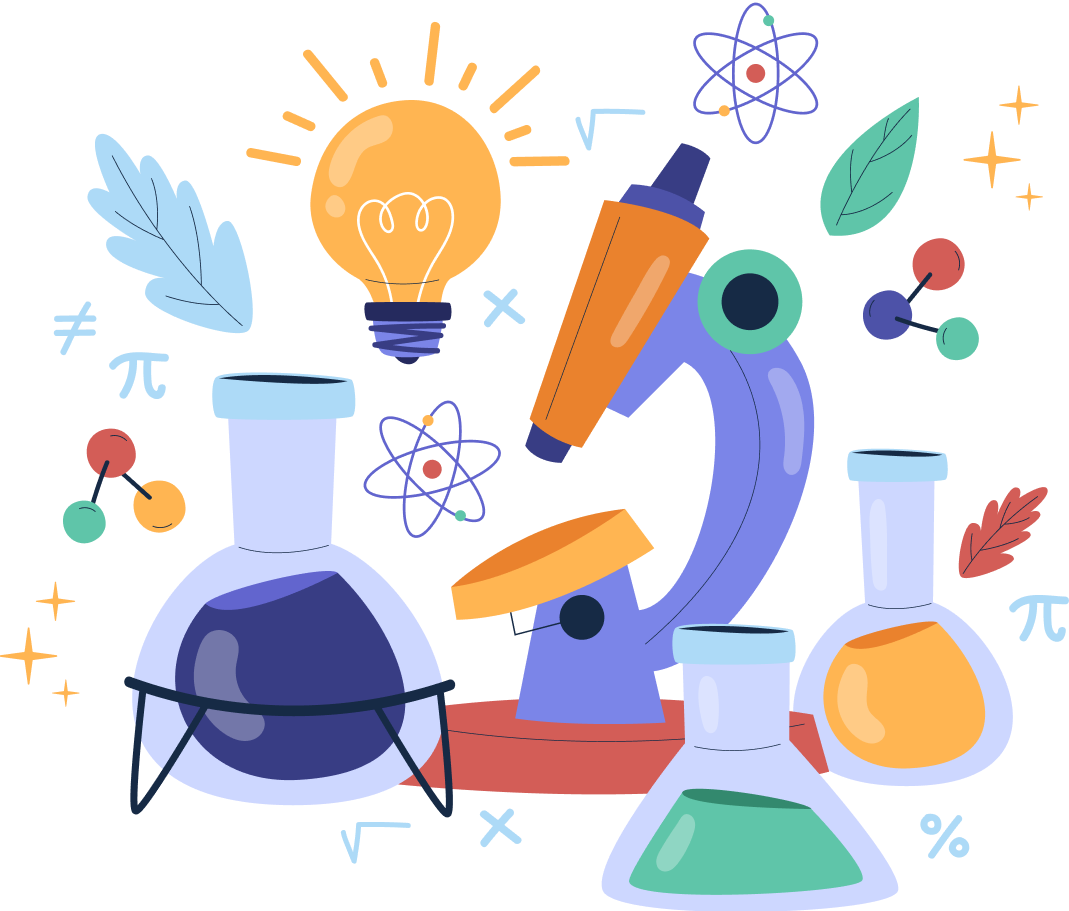Control and Coordination – Complete Guide For Class 10 Science Chapter 6
Welcome to iPrep, your Learning Super App. Our learning resources for the chapter, Control and Coordination in Science for Class 10th are designed to ensure that you grasp this concept with clarity and perfection. Whether you’re studying for an upcoming exam or strengthening your concepts, our engaging animated videos, practice questions and notes offer you the best of integrated learning with interesting explanations and examples.
Dive deeper into CBSE Class 10th Science Chapter 6 – Control and Coordination, where we unravel the fascinating interplay between various systems that enable living organisms to react and adapt to their surroundings. From the intricate workings of the nervous system to the subtle influence of hormones in the endocrine system, this chapter explores how actions are meticulously controlled and coordinated. Understanding these processes not only enhances your knowledge of biology but also highlights the incredible complexity of life itself. Join us as we embark on this enlightening journey to explore how organisms maintain balance and harmony through effective control and coordination. Let’s start with the question of the hour.
What is Control And Coordination?
Control and coordination refer to the processes by which living organisms regulate their internal activities and respond to external stimuli to maintain homeostasis and ensure survival. In animals, these functions are primarily managed by two systems: the nervous system, which transmits signals through neurons for rapid responses, and the endocrine system, which utilizes hormones to coordinate longer-term changes and regulate physiological processes. Together, these systems enable organisms to react swiftly to their environment, facilitating essential actions such as movement, growth, and adaptation. In plants, control and coordination occur through chemical signals, allowing them to respond to factors like light, gravity, and water, ensuring optimal growth and survival in varying conditions.
Understanding Movements in Living Organisms
Living beings are constantly interacting with their external environment to ensure survival. This interaction involves responding to various stimuli, which are changes around the organism that elicit a response. These responses are controlled and coordinated by specialized systems, especially in complex animals.
Stimulus and Response
Stimulus: Changes in the environment that affect organisms and trigger a reaction.
Response: The actions or movements made by living organisms in reaction to stimuli.
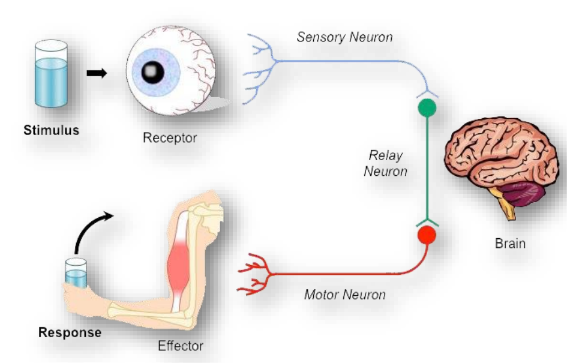
Types of Actions
Living organisms perform two main types of actions:
- Voluntary Actions: Actions like writing or reading, are under conscious control.
- Involuntary Actions: Actions like breathing, heartbeat, and reflex actions, occur without conscious control.
Control and Coordination in Organisms
The movements or responses to stimuli are controlled and coordinated through two main systems:
- Nervous System
- Endocrine System
The Nervous System
The nervous system consists of neurons, which are arranged in the form of nerves and organs like the brain and spinal cord. Neurons help in transmitting stimuli and responses in the form of signals.
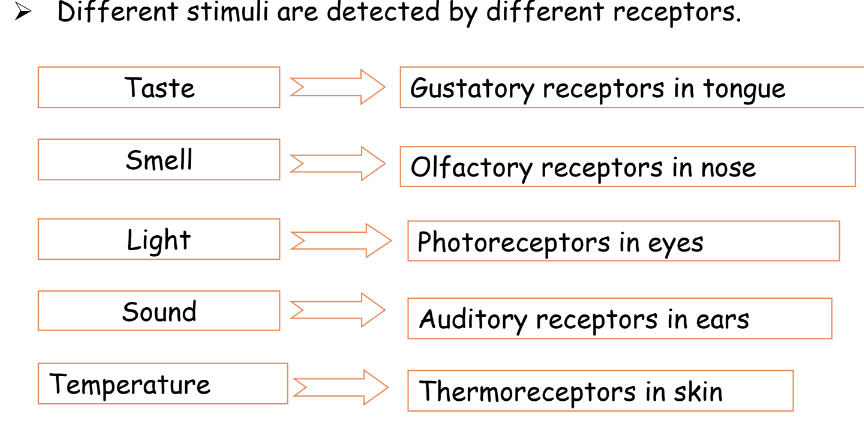
Structure of a Neuron
A neuron is the basic unit of the nervous system, consisting of:
- Cell Body
- Axon: A long process for transmitting signals.
- Dendrites: Small processes for receiving signals.

Divisions of the Nervous System
The nervous system is divided into:
- Central Nervous System (CNS): Comprising the brain and spinal cord, it integrates and analyzes stimuli to generate a response.
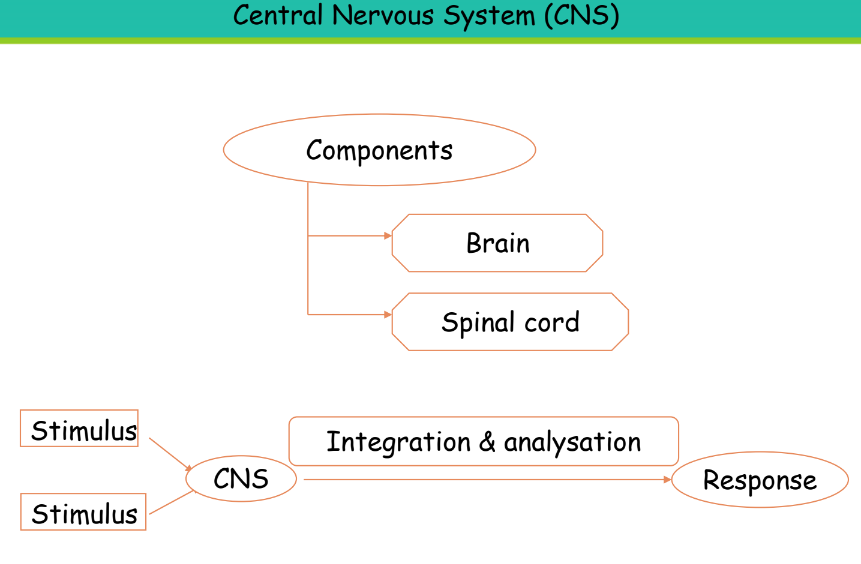
- Peripheral Nervous System (PNS): Comprising cranial and spinal nerves, it connects the CNS to other parts of the body.
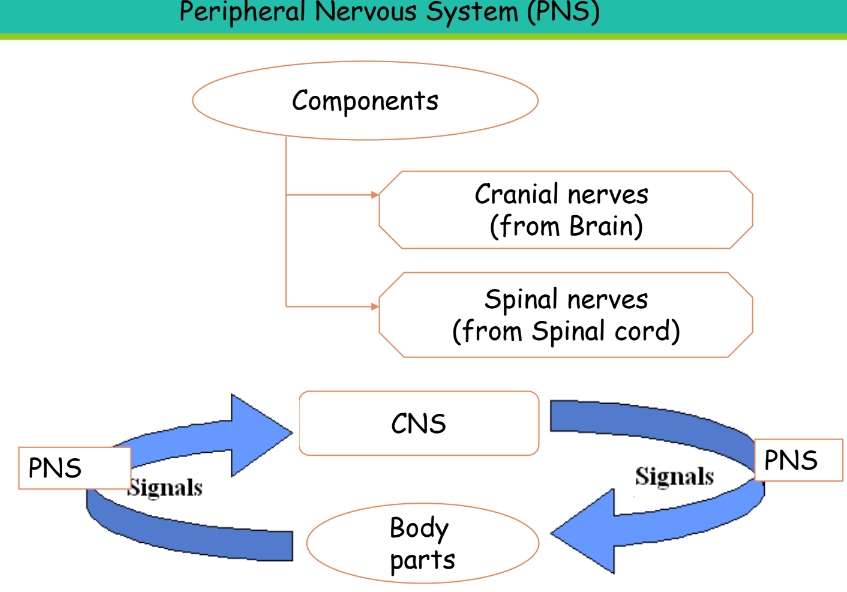
Types of Neurons
| Type of Neuron | Function |
| Motor Neuron | Carries information from CNS to muscles and glands. |
| Sensory Neuron | Carries signals from organs to CNS. |
| Relay Neuron | Acts as an intermediate neuron between sensory and motor neurons. |
The Human Brain
The brain is divided into three main parts:
- Forebrain (Cerebrum): The main thinking part, responsible for sensory information processing and interpretation. Divided into two hemispheres – Left and Right and contains specialized regions for hearing, smell, sight, etc.
- Midbrain: Connects the forebrain and hindbrain.
- Hindbrain (Pons, Medulla, Cerebellum): Controls involuntary actions like heartbeat and blood pressure, and voluntary muscle movements, maintaining body balance and posture.
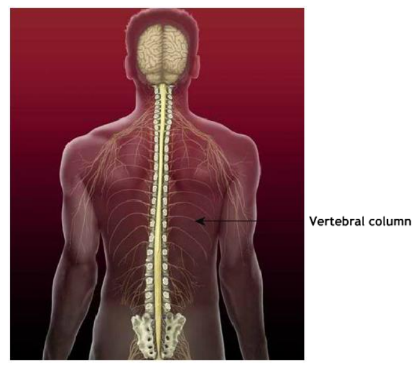
The Spinal Cord
The spinal cord is a tubular bundle of nerves that helps in reflex actions and provides a neural connection between the PNS and the brain.

Protection of the Nervous System
- Brain: Protected by the skull.
- Spinal Cord: Protected by the vertebral column.
- Shock Absorbent Fluid: Present outside the brain for protection.
Action of the Nervous System
The nervous system follows a sequence of actions:
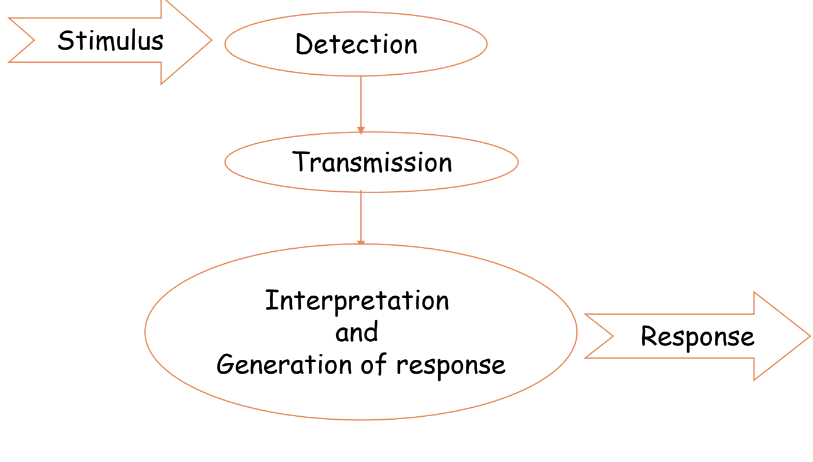
- Detection of Stimulus: Stimuli are detected by specialized nerve cells called receptors (Specialized nerve cells or the group of cells having dendritic tips specialized for detection of stimulus) in the sense organs.
- Transmission of Signals (Nerve Impulses):
Information about the stimulus is transferred to the CNS by neurons as electrical impulses.

Types of receptors:

- Integration and Generation of Response: In the CNS, signals are integrated with stored information to generate a response, which is then transmitted back to the muscles or organs.

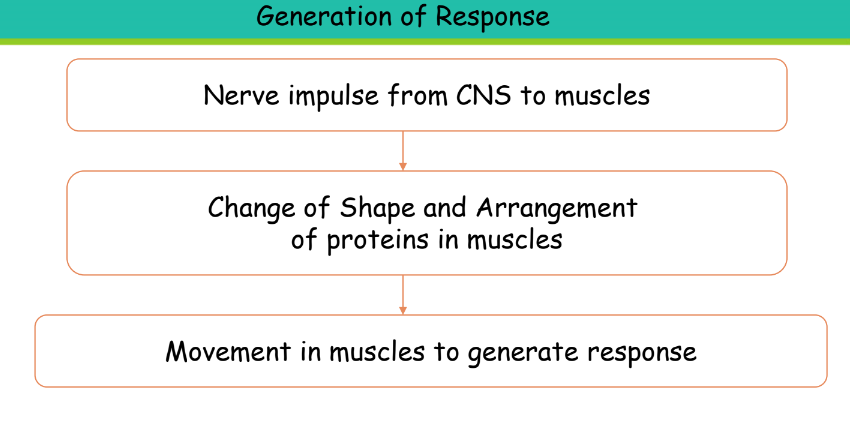
Reflex Action and Reflex Arc
Reflex Action: An involuntary and immediate response to a stimulus, controlled by the spinal cord.
Reflex Arc: The pathway followed by nerve impulses during a reflex action, typically involving the spinal cord.
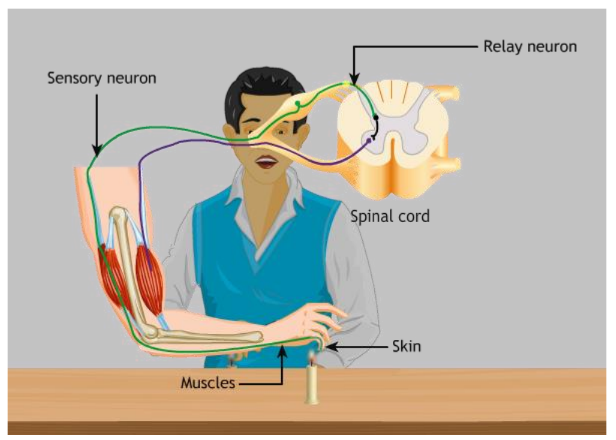
Limitations of the Nervous System
- Reach: Electrical impulses cannot reach every cell.
- Time: Neurons require time to reset after activation.
The Endocrine System
The endocrine system is a network of glands that secrete hormones, helping in chemical coordination in the body.
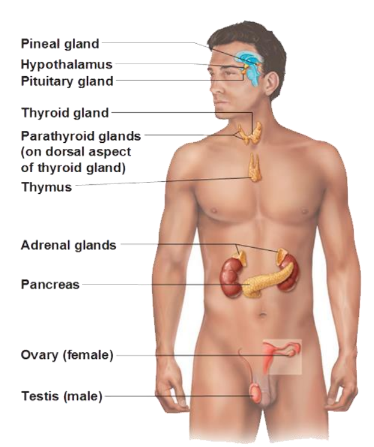
Important Hormones and Their Functions
| Hormone | Source | Function | Deficiency Effect |
| Growth Hormone | Pituitary Gland | Regulates growth and development. | Dwarfism |
| Thyroxine Hormone | Thyroid Gland | Regulates metabolism of carbohydrates, fats, and proteins. | Goitre (due to iodine deficiency) |
| Adrenaline Hormone | Adrenal Glands | Helps in response to stress and fear (Fight or Flight). | – |
| Sex Hormones | Gonads (Testes/Ovaries)Testosterone in males and estrogen in females. | Cause changes during puberty. | – |
| Insulin Hormone | Pancreas | Regulates blood sugar levels. | Diabetes |
Coordination in Plants
Plants control their movements through chemical coordination since they lack a nervous system. Plant hormones play a crucial role in growth and movement.
Types of Plant Movements
- Growth-Independent Movements: Example – The folding of leaves in the “Touch-me-not” plant.
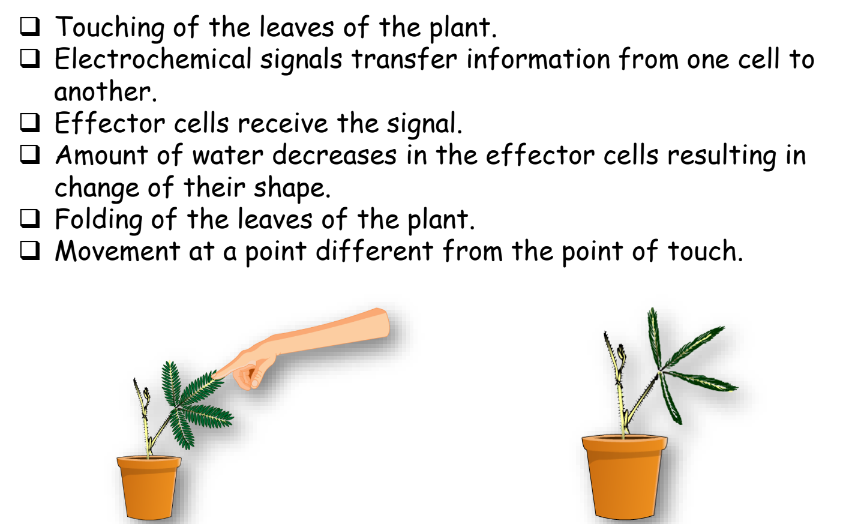
- Growth-Dependent Movements: Example – Winding of tendrils around support in plants with weak stems.
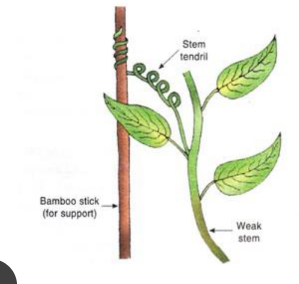
Tropic Movements in Plants
Tropic movements are growth-dependent directional movements in response to stimuli:
- Geotropism: Movement in response to gravity.

- Hydrotropism: Movement in response to water.Movement of roots of the plants deeper into the soil in search of water.
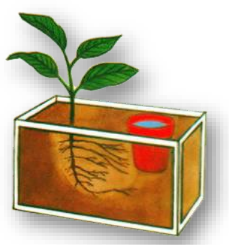
- Phototropism: Movement in response to light. Shoot – Positively phototropic; Roots – Negatively phototropic
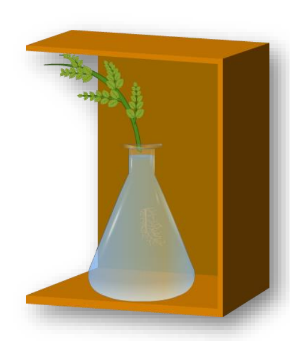
- Chemotropism: Movement in response to chemicals.
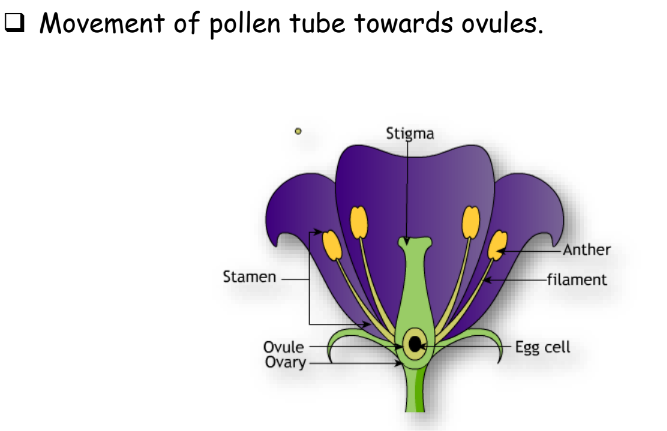
Plant Hormones and Their Roles
| Hormone | Function |
| Auxin | Promotes stem growth, and causes cell division and elongation. |
| Cytokinins | Promotes cell division, abundant in fruits and seeds. |
| Gibberellins | Inhibits growth, and causes wilting of leaves. |
| Abscisic Acid | Inhibits growth, causes wilting of leaves. |
Comparing Plant Movements
| Growth-Dependent Movements | Growth-Independent Movements |
| Caused by growth of plant parts. | Do not involve growth. |
| Slower and irreversible. | Can be fast and reversible. |
This blog offers an overview of how organisms, including humans and plants, control and coordinate their movements in response to various stimuli. The intricate systems at play ensure survival and adaptation in an ever-changing environment.
Let’s Conclude
In conclusion, CBSE Class 10th Science Chapter 6 – Control and Coordination provides essential insights into the mechanisms that govern how living organisms respond to their environment. Understanding the roles of the nervous and endocrine systems allows students to appreciate the complexity of bodily functions and the importance of coordination for survival. As we explored the fascinating processes behind stimulus-response actions and the various systems at play, it became clear that the chapter on Control and Coordination is foundational for grasping more advanced scientific concepts in future studies. By leveraging the resources available on iPrep, students can master Control and Coordination with confidence, ensuring they are well-prepared for their examinations and equipped with a deeper understanding of the living world.
Practice questions on Chapter 6 - Control and Coordination
Get your free Chapter 6 - Control and Coordination practice quiz of 20+ questions & detailed solutions
Practice Now





